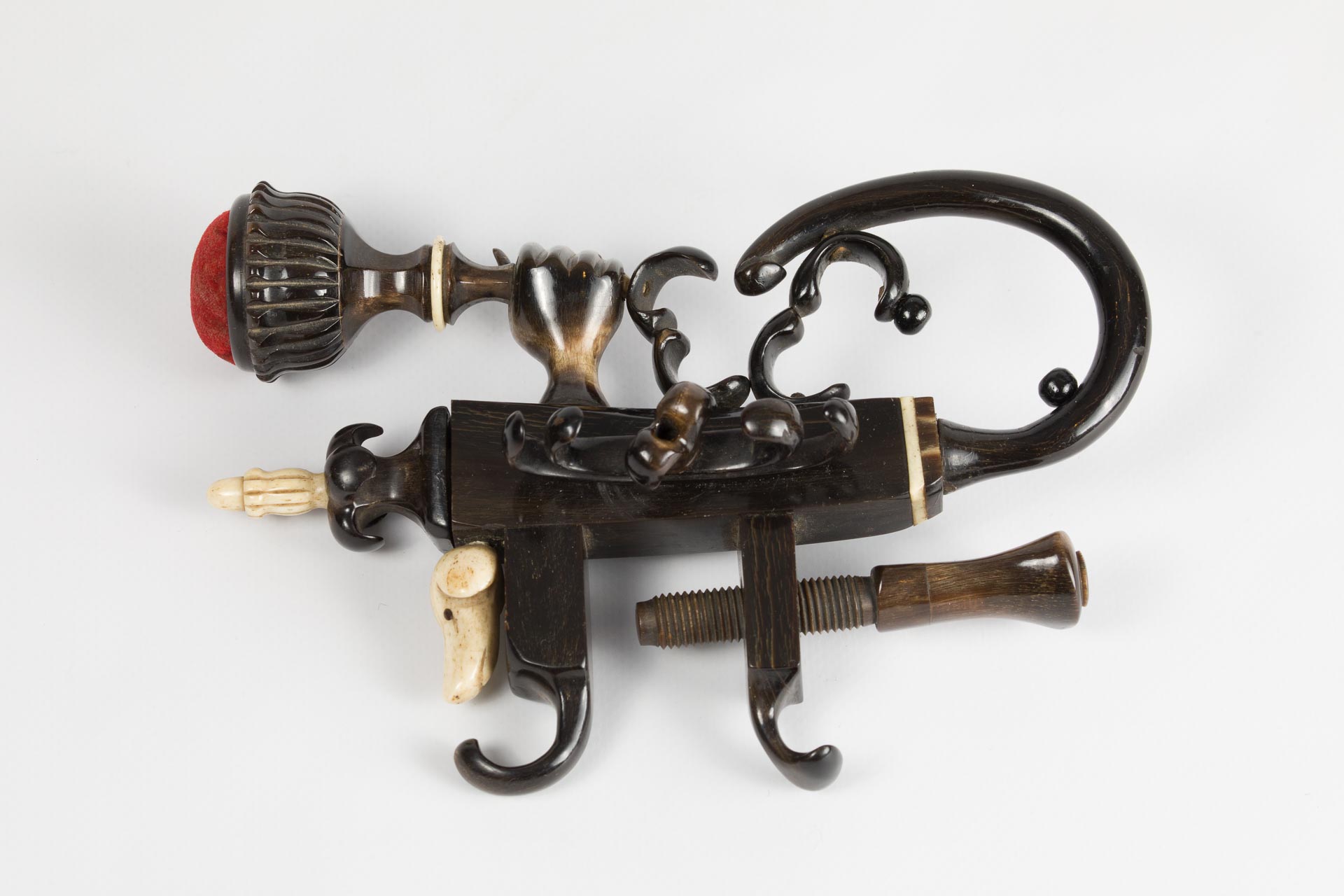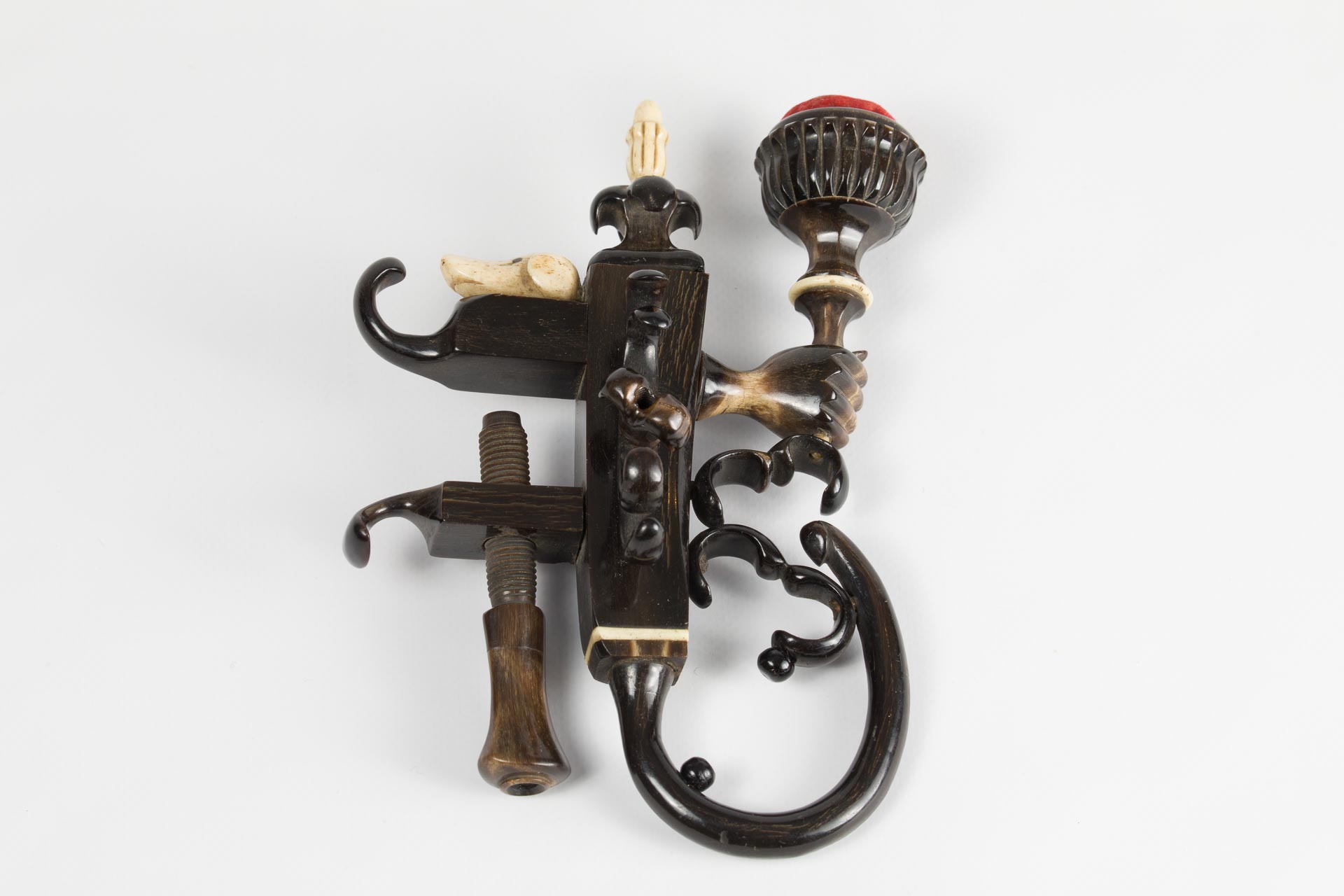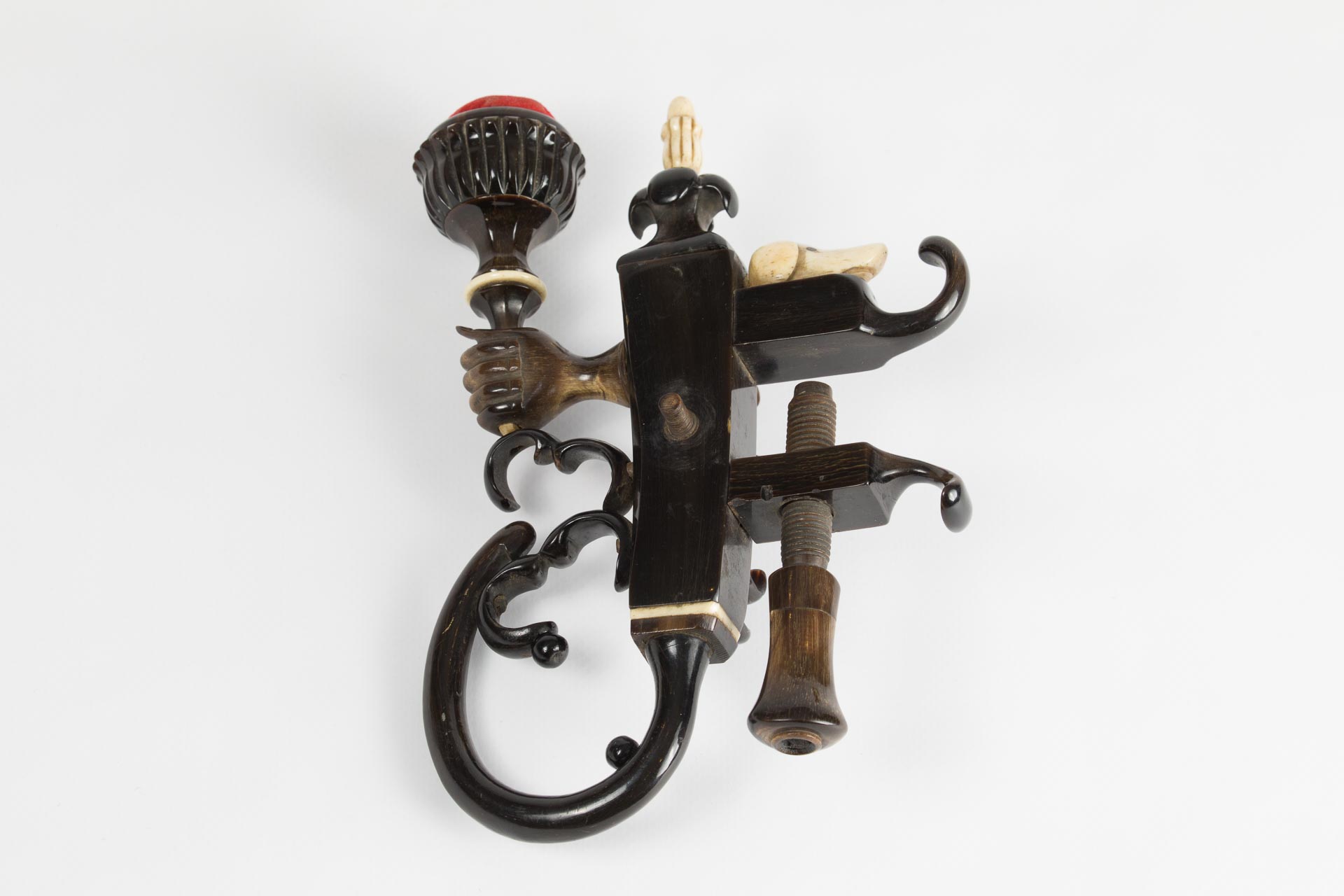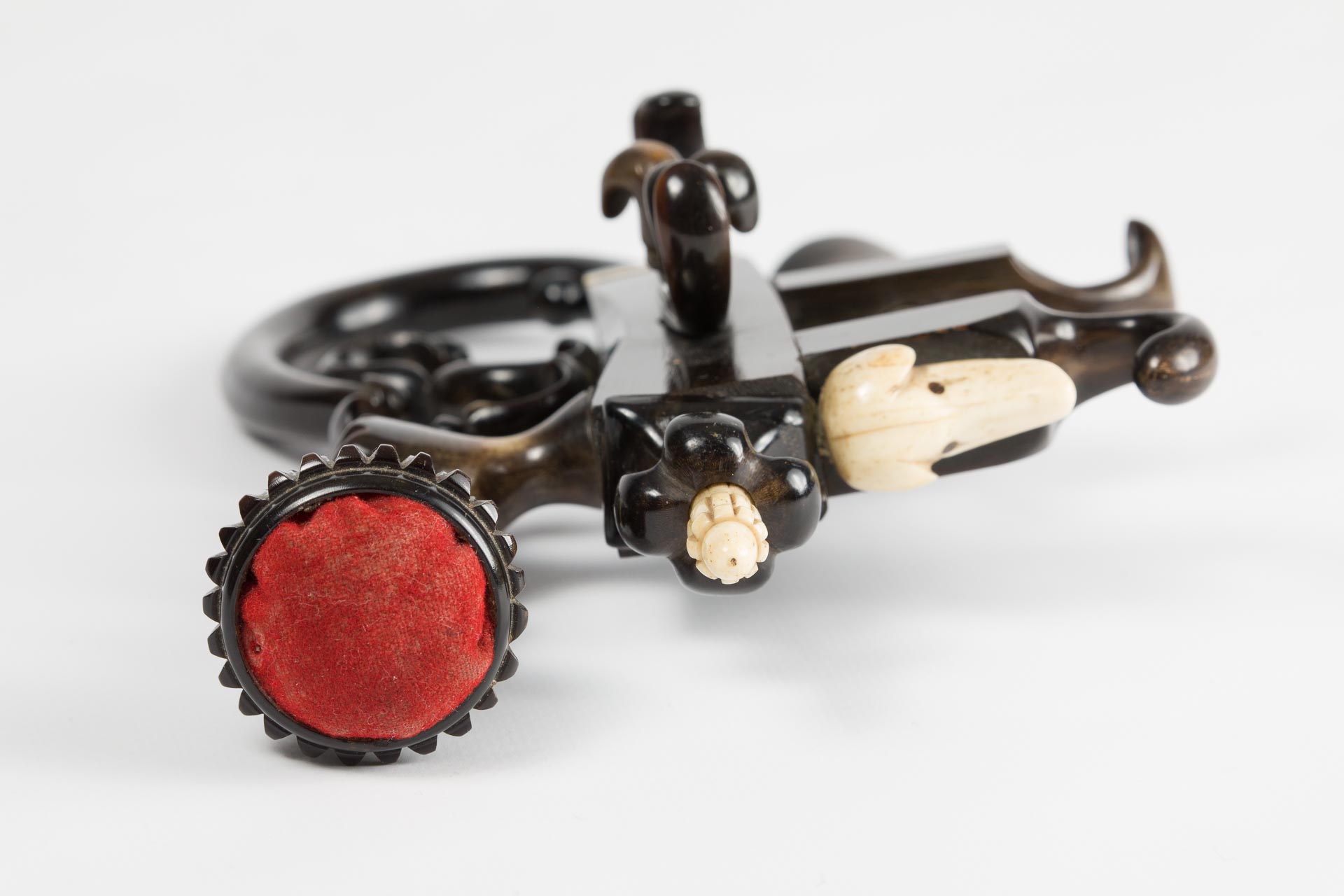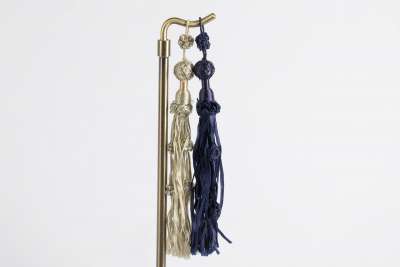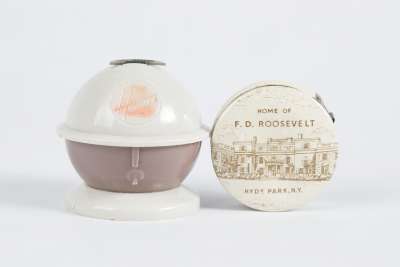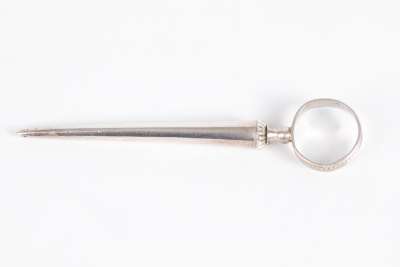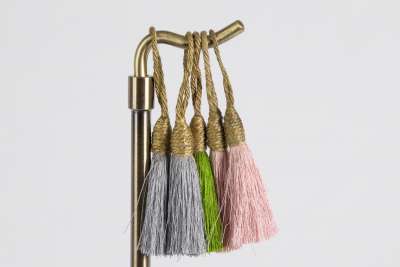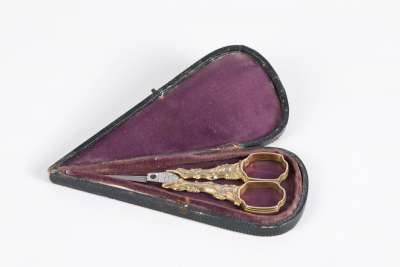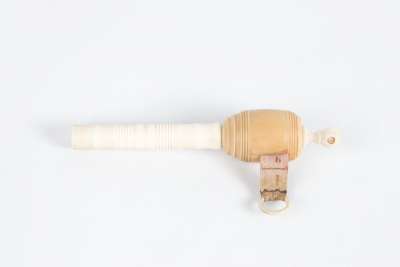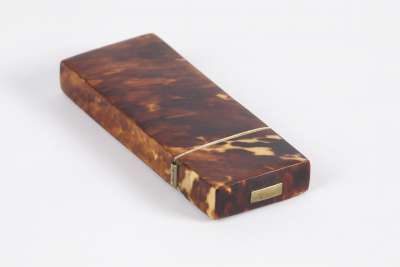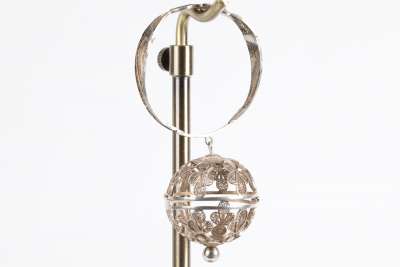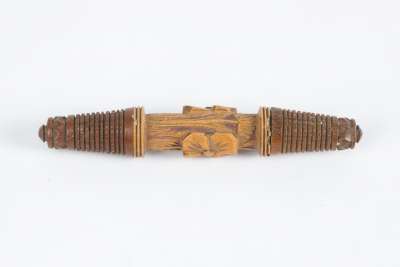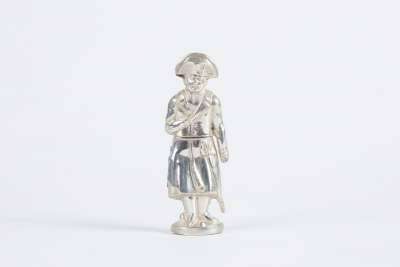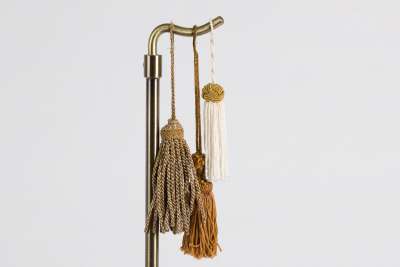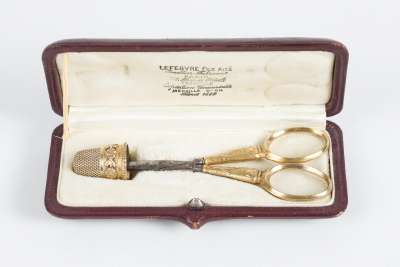This antique pincushion is a fine example of a rosewood and horn sewing clamp, likely originating from the Netherlands. Its design reflects the practical elegance of 19th-century craftsmanship, with a visually appealing combination of richly coloured rosewood and polished horn. This piece highlights the intricate work of its maker, featuring a sturdy clamp mechanism designed to attach to a table, making it both functional and decorative. The pincushion itself, resting atop, adds a touch of softness and usability, making it an ideal addition to vintage sewing collections.
Condition Report
The condition of this antique pincushion is consistent with its age and historical use, displaying minimal wear that does not detract from its functionality or aesthetic value. The rosewood and horn surfaces show gentle patina, a testament to its historical journey. The clamp mechanism remains operational, and the pincushion is intact, though it shows signs of wear typical for its age. Such wear might include slight surface scratches or minor fading, which are characteristic of a well-preserved piece from this era.
Dimensions
Weight: 175gm, Length: 12.5cm, Width: 12.5cm, Height: 19cm.
A Sewing Accessory for the Industrious Artisan
The primary function of this sewing clamp with pincushion was to aid in the creation and repair of textiles. By attaching securely to a table edge, it provided a stable point for sewing activities, allowing the user to focus on their craft with both hands free. The addition of the pincushion was particularly useful for holding pins and needles, essential tools for any sewing artisan. This accessory would have been a staple in the sewing kit of a 19th-century seamstress or tailor, reflecting a time when sewing was both a necessity and a skilled art form.
Classic Design of the 19th Century
This item exemplifies the functional yet decorative style of domestic objects from the 19th century. The use of rosewood, known for its durability and attractive grain, combined with the smooth, sleek finish of horn, illustrates the era's appreciation for both aesthetics and utility. Such objects were common in households, serving practical purposes while also contributing to the visual harmony of the home. The design subtly balances beauty and functionality, a hallmark of the period's craftsmanship.
The Craft of Rosewood and Horn
The construction of this pincushion sewing clamp likely involved skilled woodworking and horn-shaping techniques. Rosewood, favoured for its strength and aesthetic appeal, required careful handling to achieve its polished finish. Horn, a versatile material, was shaped and polished to complement the wood, both materials working together to provide durability and visual intrigue. The craftsmanship displayed in this piece speaks to the artisan's skill and the materials' intrinsic qualities, resulting in a functional item that has withstood the test of time.
Attributed to Dutch Craftsmanship
While the maker of this sewing clamp is unknown, its style and materials suggest a Dutch origin. The Netherlands has a rich tradition of producing high-quality, practical household goods, and this piece is likely a product of that tradition. Dutch artisans were renowned for their ability to blend function with form, creating objects that were both useful and pleasing to the eye. This sewing clamp would have been crafted by a skilled maker familiar with the needs and tastes of the time, reflecting a commitment to quality and craftsmanship.
Collected by Enthusiasts of Sewing Antiques
Antiques like this pincushion sewing clamp are cherished by collectors of vintage sewing tools and accessories. Such items offer a tangible connection to the past, illustrating the evolution of domestic crafts and the tools that enabled them. Collectors appreciate these pieces for their historical significance, craftsmanship, and the stories they embody. This pincushion, with its elegant materials and practical design, is a valued addition to any collection, offering insight into the daily lives and skills of those who used it.
